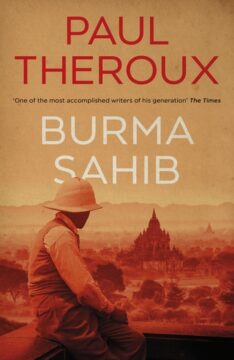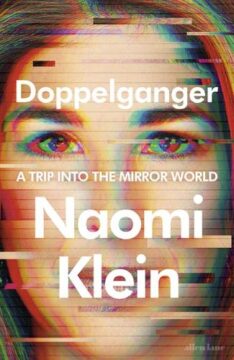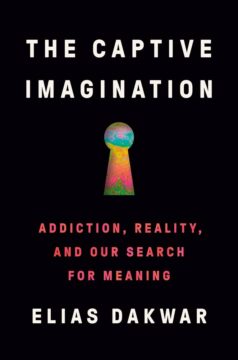Joann Wypijewski in Sidecar:
On 30 May, around cocktail time, a jury in New York criminal court found former president and Republican candidate Donald Trump guilty on all thirty-four counts of falsifying business records to cover up a payoff for Stormy Daniels’ silence in the run-up to the 2016 election. Throughout the five-week trial (on state, not federal, charges), Trump had been crafting the story of its end: the proceedings, and now the verdict, are ‘a disgrace’, ‘rigged’, presided over by ‘a judge who was corrupt’, and all of it – every grand juror and trial juror and prosecution employee and court officer – worked by orders of the Biden Administration. On the legal front, Trump will appeal. On the financial front, the verdict has been a boon, raising $52.8 million for the candidate in twenty-four hours. On the political front, CBS News immediately reported that his campaign vowed to launch ‘a grievance war across the country’.
The grievance war has been ginning up for some time. Every day, many times a day, for years, the campaign, the Republican Party and its sound machine have been broadcasting a twin message of alarm: the law is against us; the law is us. Contradiction is the point. Fear is the operative instrument: while the ‘very innocent man’ suffers, crime stalks every citizen. Immigrants and terrorists flood the country from foreign prisons and mental institutions, raping women, stealing jobs from citizens, driving down their wages, destroying their communities. The country is ‘a mess’, government broken and venal. Law and order lie prostrate, police handcuffed by the woke mob. It’s ‘American carnage’ redux, as bloodletting around the world and ‘Jihad Joe’ represent US impotence or worse – and all of this while January 6 patriots languish in federal prison. ‘Remember, it’s not me they’re after’, Trump’s campaign messages wail, ‘THEY’RE AFTER YOU – I’M JUST STANDING IN THEIR WAY!’
More here.

 M
M Dear Reader,
Dear Reader, George Salis: Your latest book is
George Salis: Your latest book is  A small, unassuming fern-like plant has something massive lurking within: the largest genome ever discovered, outstripping the
A small, unassuming fern-like plant has something massive lurking within: the largest genome ever discovered, outstripping the  It is a matter of being able to identify the true conspiracies, recognise genuine injustices and abuses of power, distinguish between credible and dubious information, plausible and implausible explanations. Klein makes a point of acknowledging that the irrational theories she examines in Doppelganger often arise from a justified sense that something is wrong – large pharmaceutical companies, for example, have real histories of unethical conduct and they really did make out like bandits during the pandemic. The question she confronts is how, and why, the valid instinct to distrust the powerful ends up being rerouted into bizarre fantasies.
It is a matter of being able to identify the true conspiracies, recognise genuine injustices and abuses of power, distinguish between credible and dubious information, plausible and implausible explanations. Klein makes a point of acknowledging that the irrational theories she examines in Doppelganger often arise from a justified sense that something is wrong – large pharmaceutical companies, for example, have real histories of unethical conduct and they really did make out like bandits during the pandemic. The question she confronts is how, and why, the valid instinct to distrust the powerful ends up being rerouted into bizarre fantasies. For the most part, Bowlero doesn’t build its own centers. Instead, it purchases existing ones and makes them over in the Bowlero style: dim lights, loud music, expensive cocktails. At Bowleros, bowling isn’t bowling. It’s “
For the most part, Bowlero doesn’t build its own centers. Instead, it purchases existing ones and makes them over in the Bowlero style: dim lights, loud music, expensive cocktails. At Bowleros, bowling isn’t bowling. It’s “ A new documentary portrait series, From the Streets to the Heart, focuses on homeless LGBTQIA+ youth and young adults in New York City. The project was initiated and created by Dutch photographer Ernst Coppejans, who also interviewed each of the 30 subjects to get their background stories and current situations. The combination of dignified portraits and the often harrowing stories (including audio clips allowing us to hear each person’s own voice) creates a palpable and empathetic understanding of how these people came to be who and where they are in the present moment. The project is a testament to the courage and resilience of people who are compelled to take very difficult steps in their lives to be true to themselves — despite tremendous emotional and financial challenges, physical danger and everyday prejudice.
A new documentary portrait series, From the Streets to the Heart, focuses on homeless LGBTQIA+ youth and young adults in New York City. The project was initiated and created by Dutch photographer Ernst Coppejans, who also interviewed each of the 30 subjects to get their background stories and current situations. The combination of dignified portraits and the often harrowing stories (including audio clips allowing us to hear each person’s own voice) creates a palpable and empathetic understanding of how these people came to be who and where they are in the present moment. The project is a testament to the courage and resilience of people who are compelled to take very difficult steps in their lives to be true to themselves — despite tremendous emotional and financial challenges, physical danger and everyday prejudice. Dakwar explores the myths and misconceptions of addiction, as well as the science, and shows how the patient’s experience is at least as important as what the latest research tells us. He describes in detail the use of ketamine given in combination with psychotherapy, and of the difficulties he has faced acquiring permission and funding to pursue his research into a treatment that itself suffers from being labelled a dangerous “street” drug.
Dakwar explores the myths and misconceptions of addiction, as well as the science, and shows how the patient’s experience is at least as important as what the latest research tells us. He describes in detail the use of ketamine given in combination with psychotherapy, and of the difficulties he has faced acquiring permission and funding to pursue his research into a treatment that itself suffers from being labelled a dangerous “street” drug. L
L